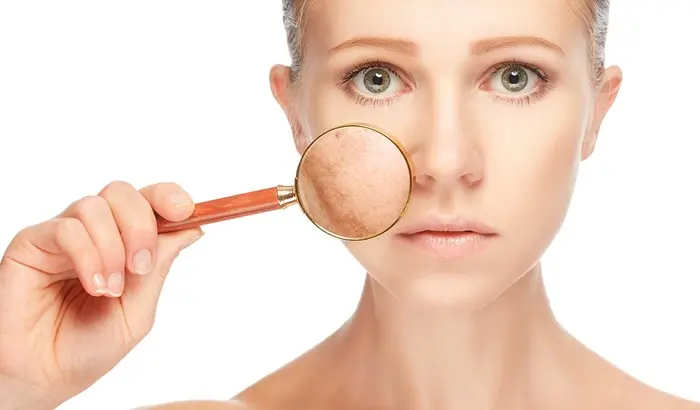Facial wrinkles are a natural part of the aging process, but for many, they are an unwelcome sign of growing older. Advances in medical beauty have provided a variety of treatments to reduce the appearance of wrinkles, helping individuals achieve a more youthful appearance. Here are six of the best ways to treat facial wrinkles, each with its own benefits and considerations.
1. Topical Retinoids
Topical retinoids are a popular and effective treatment for reducing facial wrinkles. Derived from vitamin A, retinoids help increase cell turnover, promote collagen production, and improve skin texture.
Benefits of Topical Retinoids
Stimulate Collagen Production: Retinoids boost collagen production, which helps plump the skin and reduce the depth of wrinkles.
Improve Skin Texture: Regular use can smooth rough patches and improve the overall texture of the skin.
Fade Age Spots: Retinoids can also help lighten hyperpigmentation and age spots, contributing to a more even skin tone.
Considerations
Skin Irritation: Retinoids can cause redness, peeling, and dryness, especially during the initial weeks of use. It’s important to start with a lower concentration and gradually increase as the skin adapts.
Sun Sensitivity: Retinoids can increase the skin’s sensitivity to the sun, making it crucial to use sunscreen daily.
See Also: 5 Best Facial Plastic Surgery Surgery Procedures
2. Botox Injections
Botox, or botulinum toxin, is one of the most well-known treatments for facial wrinkles. It works by temporarily paralyzing the muscles that cause wrinkles, resulting in a smoother appearance.
Benefits of Botox Injections
Quick Results: Botox injections typically show results within a few days, with the full effect visible within two weeks.
Minimal Downtime: The procedure is quick and requires little to no downtime, making it a convenient option for many.
Effective for Dynamic Wrinkles: Botox is particularly effective for dynamic wrinkles, which are caused by muscle movements, such as crow’s feet, forehead lines, and frown lines.
Considerations
Temporary Results: The effects of Botox are temporary, usually lasting three to six months. Regular treatments are needed to maintain the results.
Potential Side Effects: Possible side effects include bruising, headaches, and temporary drooping of the eyelids or eyebrows.
3. Dermal Fillers
Dermal fillers are injectable substances that add volume to the skin, filling in wrinkles and restoring a youthful contour. Common fillers include hyaluronic acid, calcium hydroxylapatite, and poly-L-lactic acid.
Benefits of Dermal Fillers
Immediate Results: Fillers provide immediate plumping and smoothing of the skin.
Versatility: Fillers can be used to address a variety of concerns, including nasolabial folds, marionette lines, and loss of volume in the cheeks and lips.
Minimal Downtime: Most filler treatments require minimal downtime, allowing patients to resume normal activities shortly after the procedure.
Considerations
Temporary Results: Like Botox, the results of dermal fillers are temporary, with effects lasting from six months to two years, depending on the type of filler used.
Risk of Complications: Potential complications include bruising, swelling, and, in rare cases, infection or allergic reactions.
4. Chemical Peels
Chemical peels involve applying a chemical solution to the skin, which causes the outer layer to peel off, revealing smoother, less wrinkled skin underneath. Peels vary in strength, from superficial peels to deep peels.
Benefits of Chemical Peels
Smoother Skin: Chemical peels can improve the texture of the skin, reducing the appearance of fine lines and wrinkles.
Even Skin Tone: Peels can also help fade age spots, freckles, and hyperpigmentation.
Stimulate Collagen Production: Some peels, particularly medium and deep peels, can stimulate collagen production, enhancing skin elasticity.
Considerations
Recovery Time: The recovery time varies depending on the strength of the peel. Superficial peels may cause redness and flaking for a few days, while deeper peels can require weeks of recovery.
Potential Side Effects: Risks include redness, scarring, and changes in skin color, particularly for individuals with darker skin tones.
5. Laser Resurfacing
Laser resurfacing uses concentrated light beams to remove the outer layer of skin and stimulate the growth of new, smoother skin. There are two main types: ablative and non-ablative lasers.
Benefits of Laser Resurfacing
Precision: Lasers can target specific areas of the face with precision, making them ideal for treating localized wrinkles.
Stimulate Collagen Production: Laser treatments boost collagen production, leading to long-term improvement in skin texture and firmness.
Effective for Various Concerns: Laser resurfacing can address wrinkles, age spots, and acne scars.
Considerations
Downtime: Ablative lasers require significant downtime, with redness and swelling lasting several weeks. Non-ablative lasers have shorter recovery times but may require multiple sessions for optimal results.
Cost: Laser treatments can be expensive, and the cost varies depending on the type of laser and the extent of the treatment.
6. Microneedling
Microneedling involves using a device with fine needles to create micro-injuries in the skin, which stimulates the body’s natural healing process and collagen production.
Benefits of Microneedling
Minimally Invasive: Microneedling is less invasive than many other wrinkle treatments, with minimal downtime.
Improve Skin Texture: It can improve skin texture, reduce fine lines, and enhance overall skin tone.
Versatile: Microneedling can be combined with other treatments, such as platelet-rich plasma (PRP) therapy, for enhanced results.
Considerations
Multiple Sessions Needed: Several sessions are typically required to achieve the desired results.
Potential Side Effects: Possible side effects include redness, swelling, and minor bruising, which usually subside within a few days.
Conclusion
Treating facial wrinkles effectively requires an understanding of the various available options and their respective benefits and considerations. Whether opting for topical treatments, injectables, peels, lasers, or microneedling, it’s essential to consult with a qualified medical professional to determine the most appropriate approach based on individual skin type, concerns, and goals. With the right treatment plan, achieving a smoother, more youthful appearance is within reach.
Related topics:


